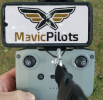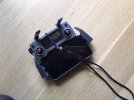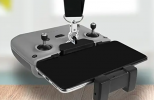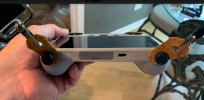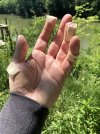Hi All,
Had my Mini Pro 3 for a week now and really impressed with it.
I took it out yesterday, it was a bit windy (around 28mph) but I thought about keep it low, but the tiny drone still managed to stay in the same spot in the sky,
just so impressive with this technology and I'm sure its no easy engineering feet to accomplish.
A couple of points I'm hoping you can help me with?
1. The RC display showed 'windy conditions' were does this info come from, how does the drone know it's windy? Would this be from the amount of
turbulence the drone is experiencing/bumping etc?
2. I'm as other forum members suggested doing hand launches now. A bit working at first, thinking the drone will tip sideways and lop my fingers off LOL
but is really easy and a few YouTube videos explain this.
On landing, its taking me a bit longer.
I keep my palm flat and pull of the left stick but the drone then try's to move up (probably think its hitting the ground), I then grab it under neath and can't believe the strength
this drone has as it try's to pull away from my hand.
Should I just execute the landing from the RC controller and just keep my hand still?
Thanks for any advice

Had my Mini Pro 3 for a week now and really impressed with it.
I took it out yesterday, it was a bit windy (around 28mph) but I thought about keep it low, but the tiny drone still managed to stay in the same spot in the sky,
just so impressive with this technology and I'm sure its no easy engineering feet to accomplish.
A couple of points I'm hoping you can help me with?
1. The RC display showed 'windy conditions' were does this info come from, how does the drone know it's windy? Would this be from the amount of
turbulence the drone is experiencing/bumping etc?
2. I'm as other forum members suggested doing hand launches now. A bit working at first, thinking the drone will tip sideways and lop my fingers off LOL
but is really easy and a few YouTube videos explain this.
On landing, its taking me a bit longer.
I keep my palm flat and pull of the left stick but the drone then try's to move up (probably think its hitting the ground), I then grab it under neath and can't believe the strength
this drone has as it try's to pull away from my hand.
Should I just execute the landing from the RC controller and just keep my hand still?
Thanks for any advice




